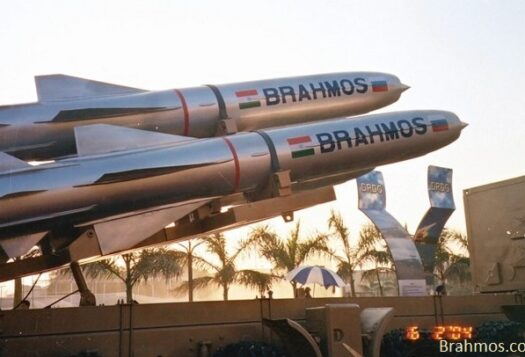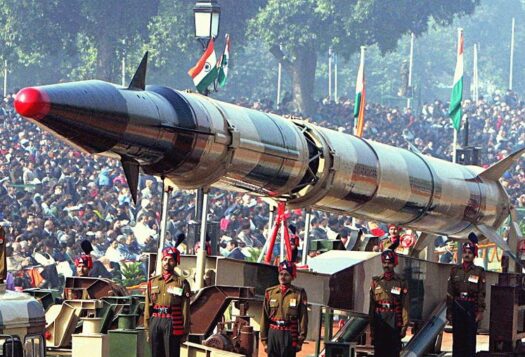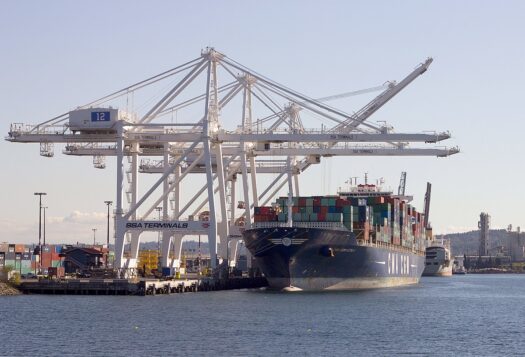
Every year since 1945, the month of August unfailingly reminds the world of the unmistakable power and dangers associated with nuclear weapons; this reminder also occasions renewed powwows on the state of play of the international nuclear order. Among the abundance of scholarly analyses on nuclearization of South Asia, few are able to break new ground in terms of constructively explaining the behavior of nuclear weapons powers. In this context, Brokering Peace in Nuclear Environments: U.S. Crisis Management in South Asia (Stanford University Press, 2018) by Moeed Yusuf certainly brings renewed rigor to scholarship on the subject.
Theory of Brokered Bargaining
Yusuf offers a theory of “brokered bargaining,” which explains third party involvement in regional nuclear crises in a unipolar world. According to this theory, crisis management in regional nuclear dyads in the post-Cold War unipolar setting is a three-actor interaction, involving the antagonists and the United States in the role of a “power mediator.” In terms of bringing a third-party equation into the study of crisis diplomacy, this is not avant-garde work, as the author himself notes from a discussion of four strands of literature that have contributed to the development of the theory of brokered bargaining. However, Yusuf’s three actor-model of brokered bargaining claims to be a departure from literature that understands the behavior of states during nuclear crises through the prism of bilateral deterrence.
Brokered bargaining seeks to explain patterns of state behavior and crisis outcomes in regional nuclear dyads and launches yet another challenge against the pervasive logic of nuclear deterrence.
Brokered bargaining is a process in which the antagonists are involved in a parallel process of compellence and/or deterrence vis-à-vis the nuclear-capable adversary and attracting third-party attention in a bid to either leverage their own position and extract gains or de-escalate the crisis. According to Yusuf, the third party’s concerns about the dangers of escalation in a regional crisis involving nuclear weapons, notwithstanding their specific foreign policy interests, mandate its involvement in crisis management and mediation, solicited or unsolicited by the conflicting parties and irrespective of the nature of the event that triggers the crisis. An interplay of “perceptions, expectations, incentives, strategies and choices” of the three players works toward determining the crisis outcome. Brokered bargaining seeks to explain patterns of state behavior and crisis outcomes in regional nuclear dyads and launches yet another challenge against the pervasive logic of nuclear deterrence.
Conceptual and Empirical Insights
Brokering Peace in Nuclear Environments contributes conceptual and empirical insights to the vast literature on international crises, and specifically to the decision-making and bargaining components of crises. Conceptually, brokered bargaining appears to bridge a gap between the two levels at which international crises are known to operate—the international system level and the state actor level. Regional crises tend to be looked at as foreign policy crises in terms of threats perceived by the regional actors to their interests and values. The introduction of the unipole – the United States – as the third-party mediator and a decisive factor in brokered bargaining redefines the crisis at the system level. The third-party is understood to perceive the crisis between the regional nuclear powers as a disruptive event that challenges the stability of the international system. This “three-cornered” model of brokered bargaining, therefore, connects the foreign policy level of the crisis, as perceived by the antagonists, with the system level perception of the regional/international crisis held by the third-party.
This ‘three-cornered’ model of brokered bargaining, therefore, connects the foreign policy level of the crisis, as perceived by the antagonists, with the system level perception of the regional crisis.
Empirically, Yusuf’s analysis of the three Indo-Pak crises spanning a decade – the Kargil war (1999), the Twin Peaks crisis (2001-02) and the Mumbai attacks (2008) – also explains the various crisis management tools, processes, and strategies available to the actors in South Asia’s nuclear dyad. For instance, the use of travel advisories by the United States and the United Kingdom as a crisis management tool in the aftermath of the Mumbai terrorist attacks (2008)—based on the successful but inadvertent U.S. experience with such advisories issued during the Twin Peaks crisis (2001-2002)—in manipulating costs of escalation for India is a mootable yet interesting factor highlighted in section two of the book. Additionally, the near-breakdown, even misuse, of established means of bilateral communication, such as hotlines, and the yielding of this space to the third party to exchange and manipulate information is an important takeaway for crisis diplomacy. In terms of crisis behavior and strategic choices, Yusuf argues that, contrary to the traditional understanding of India’s strict insistence on bilateral crisis management with Pakistan, the three cases examined in the post-Cold War nuclear environment in South Asia show India’s non-aversion, if not preference, for the United States’ mediation role.

Applying Brokered Bargaining Beyond South Asia
While the author uses the brokered bargaining model to neatly explain the three illustrative cases of Indo-Pak crises, its applicability outside of these cases merits greater examination. In South Asia, the absence of a U.S. role in prodding de-escalation during the Indo-Pak border clashes in 2016, 2017 and 2018 – the worst years of India-Pakistan ceasefire violations since the 2003 ceasefire agreement (according to the data recorded by the Indo Pak Conflict Monitor), accompanied by heightened political rhetoric and serious escalatory potential—becomes counterintuitive to the tenets of brokered bargaining. In the India-China dyad, the relevance of strategic nuclear postures, conventional military asymmetry, and a strong U.S. foreign policy objective of containing and balancing Chinese power and influence in Asia would expose the limitations of U.S. role in crisis management as well as the theory of brokered bargaining.
In South Asia, the absence of a U.S. role in prodding de-escalation during the Indo-Pak border clashes in 2016, 2017 and 2018…becomes counterintuitive to the tenets of brokered bargaining.
The toughest analytical challenge for the theory of brokered bargaining is its applicability to other regional nuclear dyads (or triads) beyond South Asia. Yusuf examines the general applicability of the three-actor bargaining model vis-à-vis four prototype cases, covering West Asia (Israel and other regional powers), East Asia (Korean Peninsula) and South Asia (India-China). Besides the India-China nuclear dyad, every other example is still only a potential case of a regional nuclear dyad. The Korean dyad comes out to be the least likely case for a strictly three-party model of brokered bargaining, given the strong Chinese interests and historical role in the region. Moreover, nuclear developments on the Korean Peninsula are far from over; the extant antagonism between the current dispensations in the United States and North Korea do not allow for a mediating role for the United States, as defined in the South Asian scenarios, to be realistically executed.
New Lens to Study South Asia
Brokering Peace in Nuclear Environments offers a valuable analytical lens to students of nuclear politics in international relations by outlining the trilateral and multilateral dynamics in regional nuclear environments. Yusuf’s prudent narration of the post-Cold War nuclearized canvas of South Asia and of the three Indo-Pak crises will positively engage readers from the region and outside.
Editor’s Note: In this four-part series, SAV contributors Tanvi Kulkarni, Joy Mitra, Saima Sial, and Muhammad Faisal review political scientist Moeed Yusuf‘s new book Brokering Peace in Nuclear Environments: U.S. Crisis Management in South Asia (Stanford University Press, 2018). The book traces the history of conflict between nuclear neighbors India and Pakistan and assesses the potential of third parties to prevent nuclear war in South Asia.
***
Click here to read this article in Urdu.
Image 1: Jack Zalium via Flickr
Image 2: Sondeep Shankar via Getty


